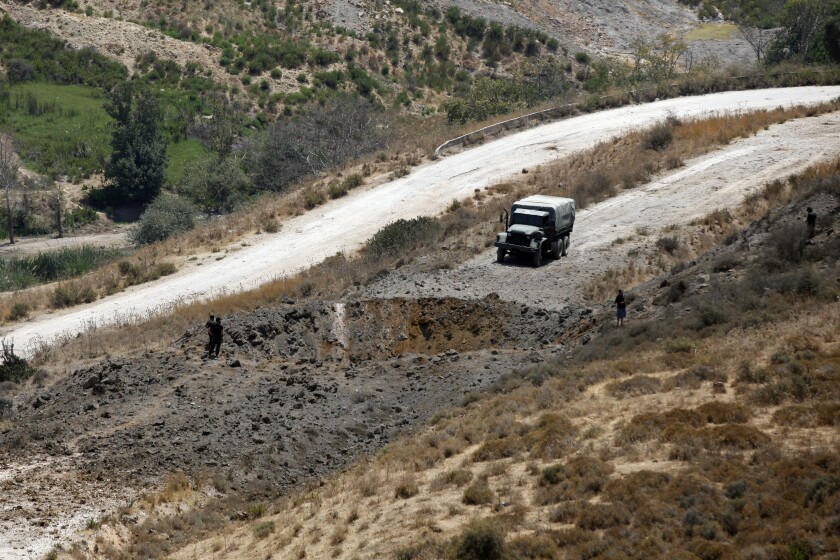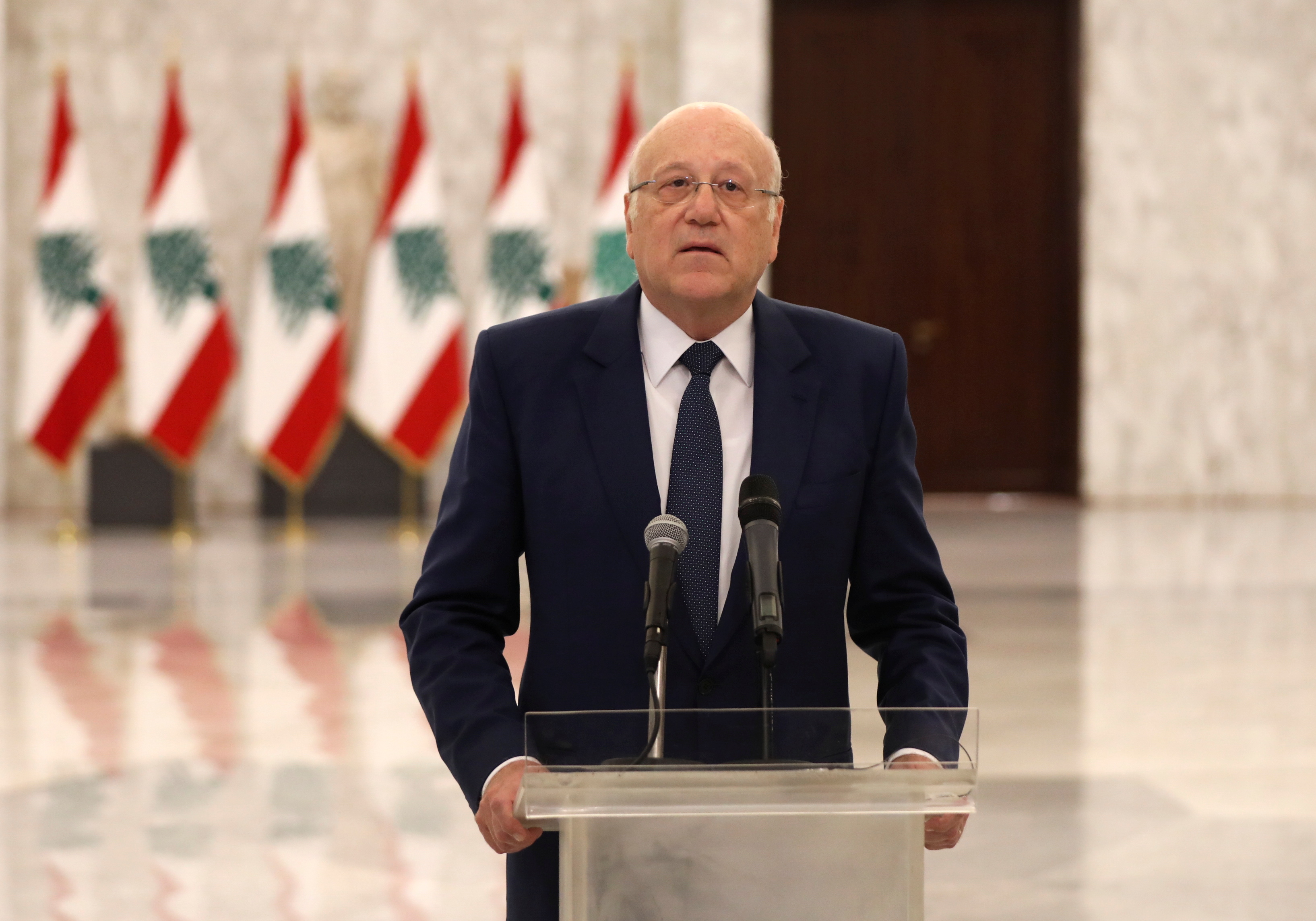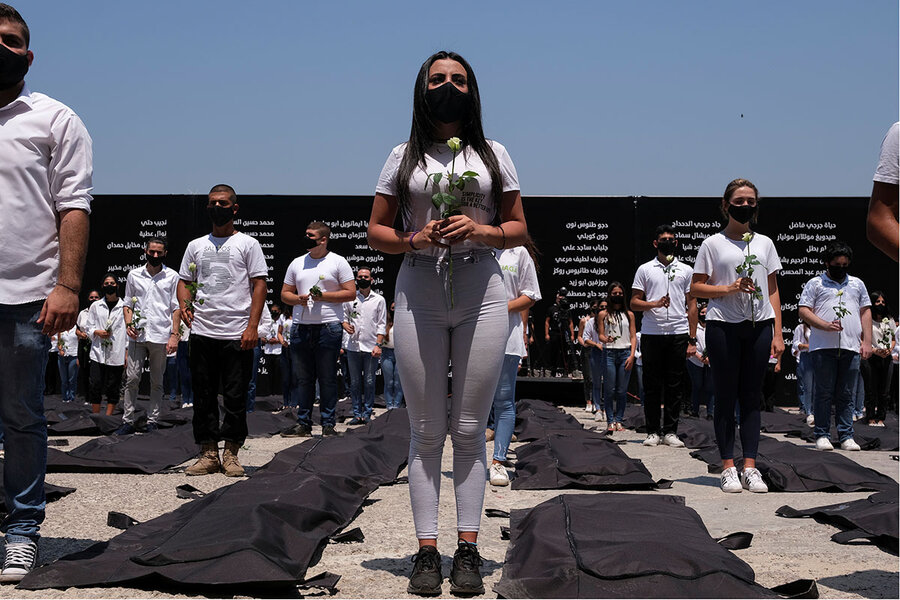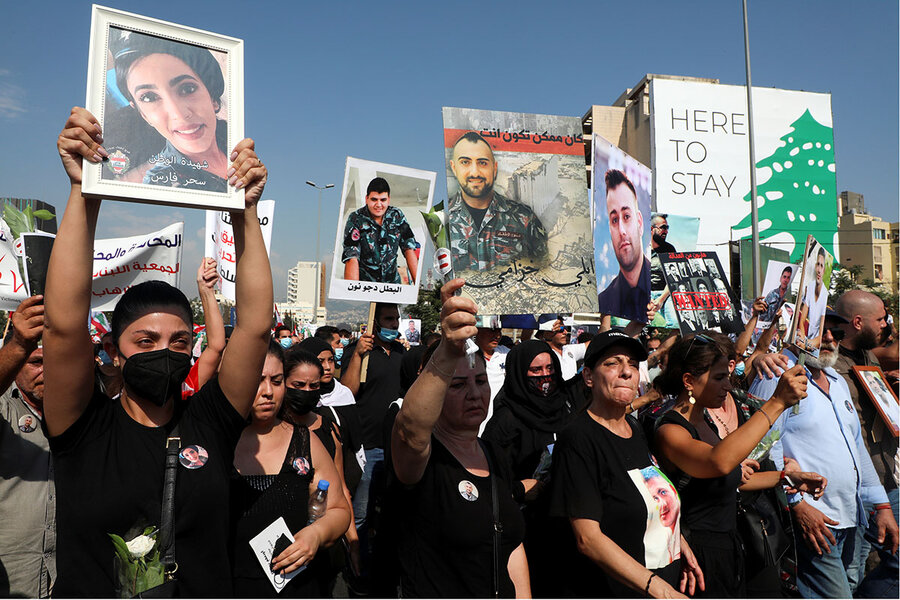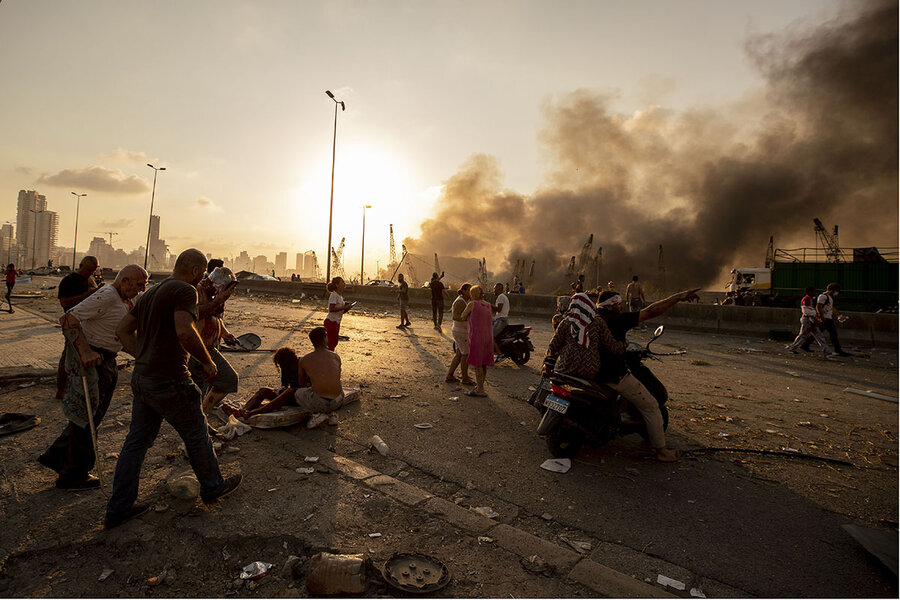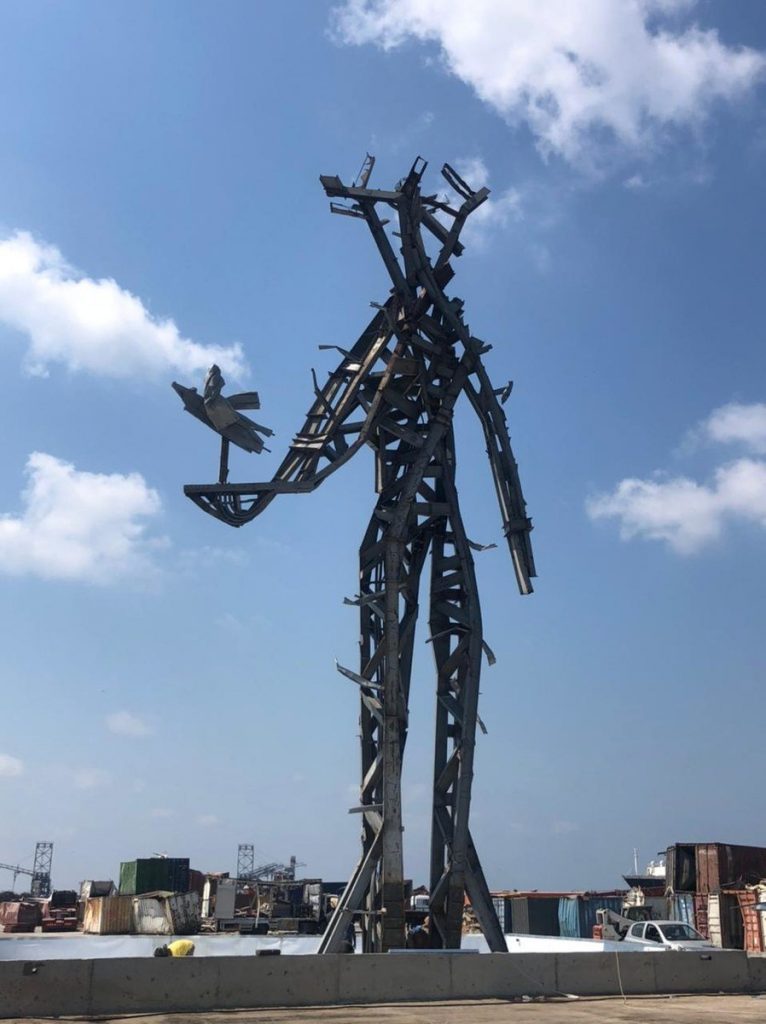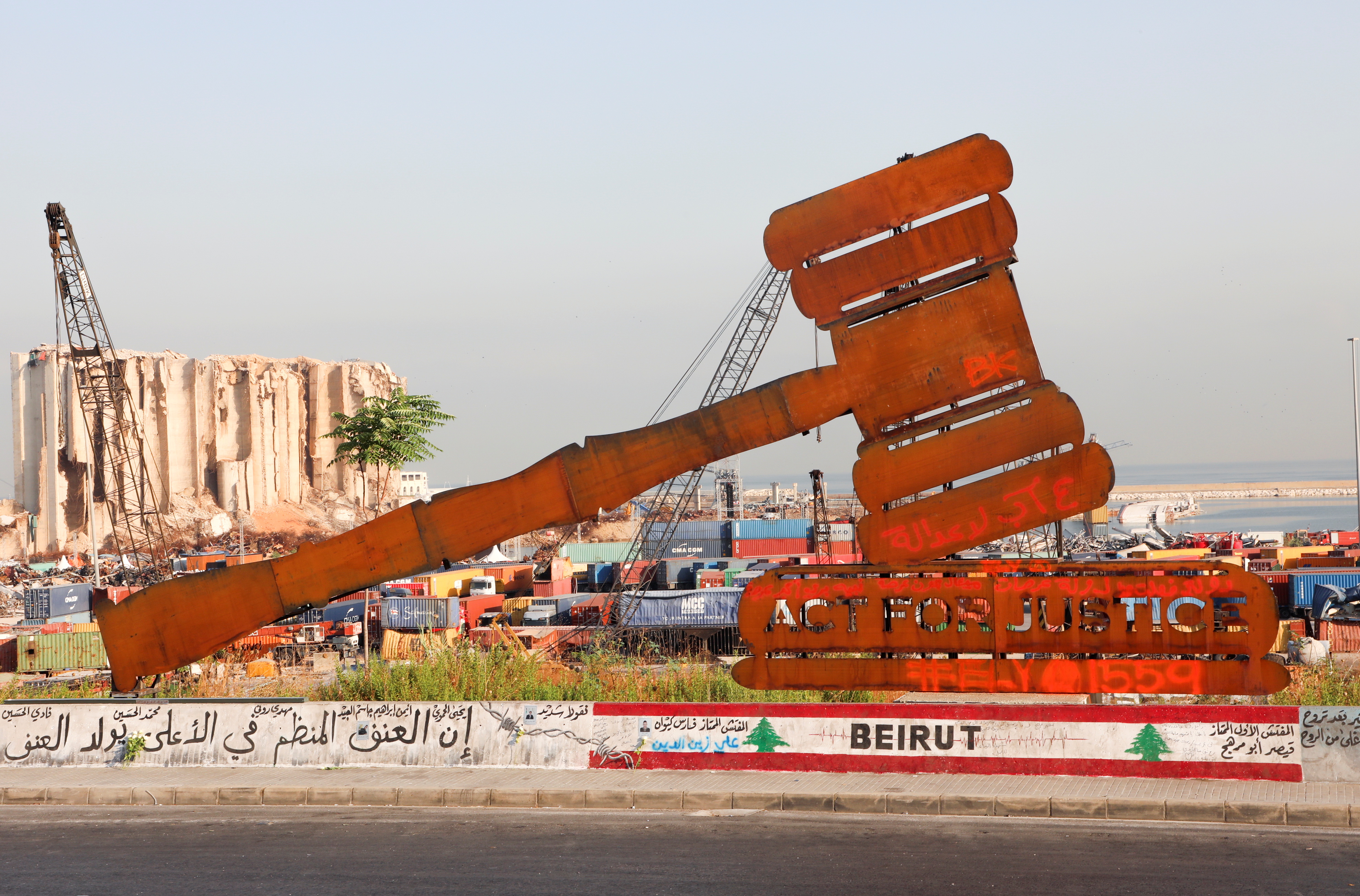
A justice symbol monument is seen near the grain silo damaged during last year’s Beirut port blast as Lebanon marks the one-year anniversary of Beirut port explosion, in Beirut, Lebanon August 4, 2021. REUTERS/Mohamed Azakir
By By Tamara Qiblawi — cnn — It’s been a year since one of the world’s largest ever non-nuclear explosions ripped through Lebanon’s capital, killing more than 200 people. On any given day in Beirut’s worst-affected neighborhoods, theories about the explosion still circulate. No two stories of human tragedy are alike, and most interactions between people here end not with a goodbye, but with an invocation that Lebanon’s ruling elite be toppled. The political class is, overwhelmingly, blamed for the disaster. At just after 6 p.m. on August 4, 2020, hundreds of metric tons of ammonium nitrate ignited, sparking the massive blast in the city’s port. The industrial chemicals had been improperly stored there for years due to the failure to act by successive governments and lawmakers across the political divide. That much is clear. But for people across Lebanon, there are still many unanswered questions about what led to the tragedy, and there has been no sense of closure in the 12 months since the explosion.
Here’s what we still don’t know.
What triggered the blast?
Because of the many inquiries by journalists and rights groups over the past year, we know that the ammonium nitrate — stored alongside fireworks in a poorly maintained warehouse — was a disaster waiting to happen. Six urgent letters sent by customs officials since 2014 — the year the material was unloaded at the port under mysterious circumstances — had alerted the authorities to the danger posed by the chemicals. One was written by a port official in May 2020, just months before the blast. “This substance, if ignited, will lead to a large explosion, and its outcome will almost obliterate the port of Beirut. If the substance were exposed to any kind of theft, the thief would be able to use this substance to build explosives,” warned the document, which was obtained by CNN after the incident. Beirut’s port is just 100 meters from some of the city’s most densely-populated neighborhoods. The blast destroyed not only a large part of the port, but also left swathes of the city in tatters. The damage was estimated at between $3.8 and $4.6 billion. It is clear that successive leaders — four governments and three prime ministers — either would have or should have known about the threat posed by the material, and that little was done to address the danger.
But what is far from clear, 12 months on, is what ignited the ammonium nitrate. According to a report by Human Rights Watch, Tarek Bitar, the judge charged with investigating the explosion, is looking into several theories. One is that sparks from welding works that day caused a fire in hangar 12, the warehouse where the chemical was being stored. Another is that an Israeli strike was the catalyst, though Lebanese aviation officials reported that local radar systems did not detect military aircraft over Lebanese airspace in the hour or so before the blast, Israeli officials have denied any involvement, and Bitar himself has said the Israel theory was highly unlikely, according to HRW’s report. Bitar is also exploring the theory that the explosion was an intentional act, according to HRW. A huge fire broke out Thursday at the Port of Beirut, triggering panic among residents traumatized by last month’s massive explosion that killed and injured thousands of people.Huge fire breaks out at Beirut port a month after explosion “Speculation that Hezbollah may have wanted to destroy the ammonium nitrate at the port supposedly to hide that some of the ammonium nitrate in the stockpile had been used by Hezbollah’s ally Bashar al-Assad in Syria to produce barrel bombs increased as reporting emerged regarding the connection between the cargo owners and individuals sanctioned by the U.S. for alleged links to Assad,” the report said, referring to an investigative report by local journalist Firas Hatoum.
